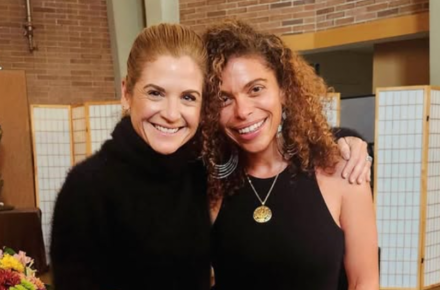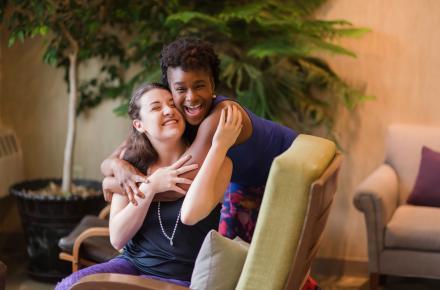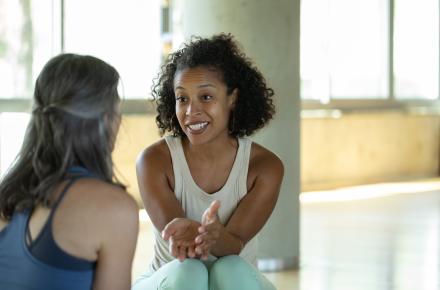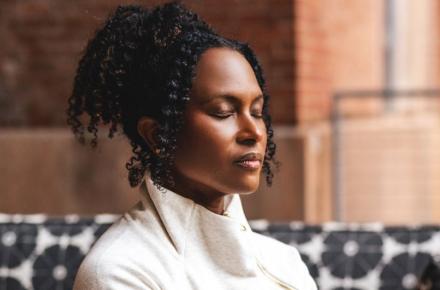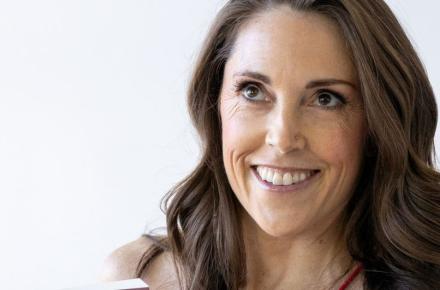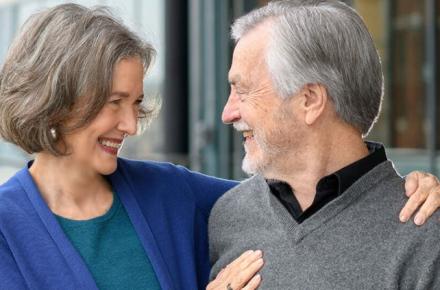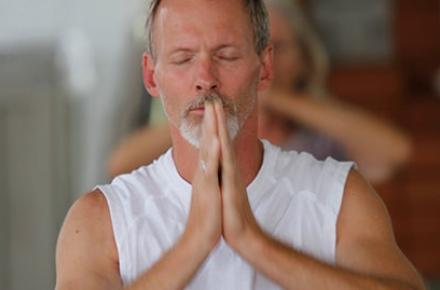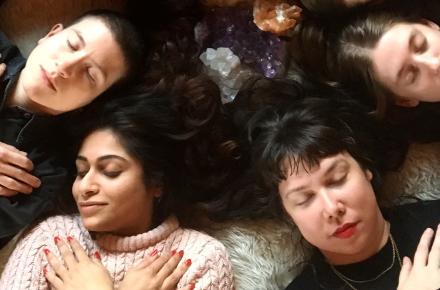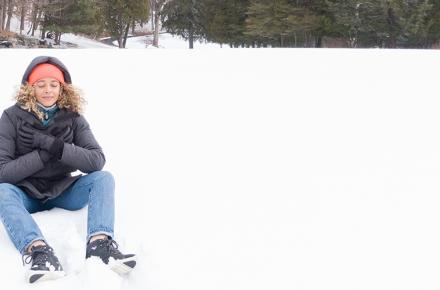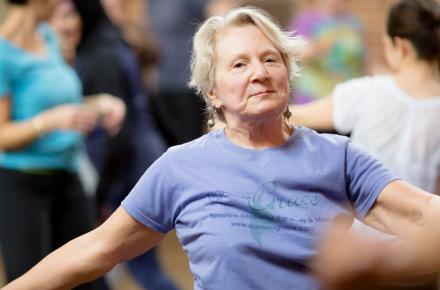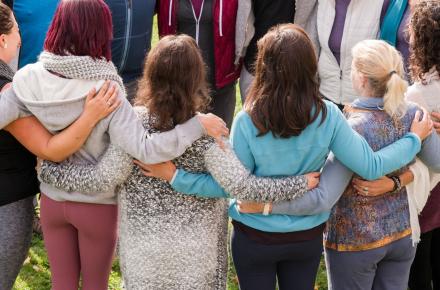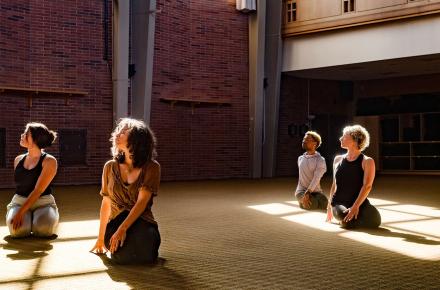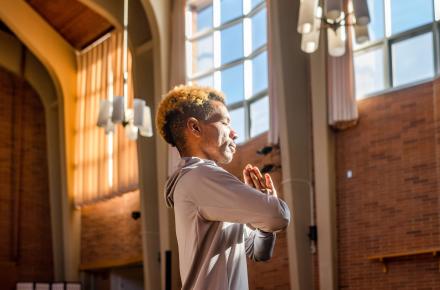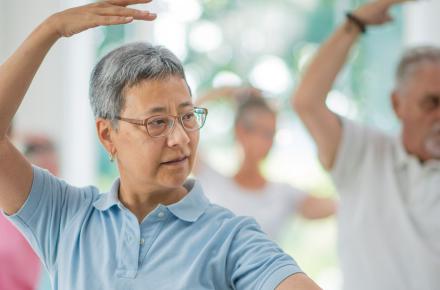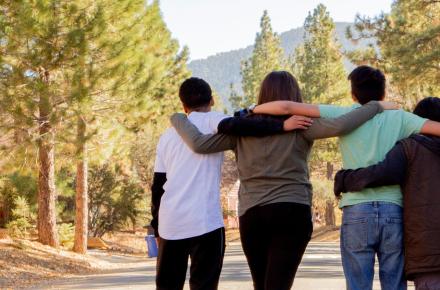How to Look at Your Past with Compassion So You Can Make a Loving Impact in the Future

Looking back on my childhood, I realize that I grew up with split personalities. This was not a conscious choice, but rather a survival mechanism. Though it was not their intention, my caretakers did not know how to support my uniqueness; they had adopted society’s conditioning to cherish sameness. In part, it was through my desire to feel connected and loved that I learned to compartmentalize aspects of my personality into different personas. But even more than that, it was an act of self-preservation.
My persona at home was a suffocated little boy, feeling overwhelmed and confused. I remember asking whoever or whatever was listening to “make me normal.” Looking back at that little boy who desired to be something that does not exist, I feel so much compassion for him.
Another persona would emerge outside the house. I would become a joker, making people laugh to distract from my own inner chaos. Though this version was created so I could get on with my daily life, it ended up calcifying guilt and shame inside me. It wasn’t until later in my life that I uncovered all the ways that I abandoned myself and leaked my pain onto others, using humor to cover up my suffering.
It was only when I moved to Los Angeles in my 20s that I was finally able to feel free enough to set aside those personas and begin exploring my true self. This was incredibly scary and powerful; it brought up all the pain, mistakes, hurt, guilt, shame, and insecurities that I had swept under the rug. I had no skills for coping or processing, so I did what I had been conditioned to do: I partied my pain away. For a time, that was an incredibly supportive coping mechanism. With the crutch of drugs and alcohol, I presented as a functioning yet highly anxious and depressed queer man. Yet I was still living a lie.
Fast-forward to fall 2014: I was heading back to India for the second time, with a stop on the way for a 30-day meditation retreat in Nepal. Removed from all the personas I had created, I felt my underlying suffering begin to surface. At first, I believed my pain was a reflection on myself, not on my actions, and this confusion led me to wonder if life was even worth living.
Still, I continued the practice of being present. And then, one day during the retreat, I finally had a glimpse of internal space where the unprocessed could come out—a moment when all my past pain and experiences began to pour into my mind. From this place of connection, I slowly but surely learned to be present and listen from what I call the spiritual heart—nothing more and nothing less than our true nature, who we are when all the stories fall away, our innate potential to be free of suffering and tap into our inherent qualities of compassion, wisdom, courage, creativity, and harmony.
It was only when I was securely rooted in my spiritual heart that I could look at my past with compassion. The painful memories shifted sides. They stopped generating hurt and defensiveness, and transformed into allies and growth points on my healing journey. I came to know that we all have a unique message to share with the world and that these painful experiences and personas are an integral part of that message.
Who would you be if you weren’t defined by your hurt and pain? And what would you give back?
Here are the three pillars of transformation to guide you into the spiritual heart.
Practice (What You Do)
- Breathwork: The breath is the fastest way to drop into the present moment and quiet the mind. In that silence, the nervous system becomes regulated and you can listen to the language of the spiritual heart for instructions on what to do next.
- Meditation: Setting aside even 10 minutes a day for meditation improves your ability to self-regulate in times of stress. It strengthens the pause between stimulus and response, so you can more easily choose the next skillful action.
- Exercise and nutrition: A strong, well-nourished body helps you serve others without becoming depleted. When you take care of your physical health, your mental health improves as well.
- Service: Sharing with others and finding ways to be of service keeps you grounded in humility and rooted in community. Selfless service without attachment to the outcome helps you cultivate compassion and well-being for yourself and those around you.
Wisdom (What You Learn)
- Confession: In yoga, satya refers to the truthfulness that helps liberate us from the pain of secrecy. Speaking your truth aloud, to yourself at first and then to an ally when you are ready, creates healing, freedom, and peace.
- Forgiveness: Forgiving releases you from the bondage of hatred, anger, and sadness. This is an art, and it requires continuous work. Forgiveness does not happen quickly or cleanly.
- Commitment: Make a commitment to become the best version of yourself, no matter what it takes. The path is neither easy nor linear. But it is possible, and you are worth it.
Values (What You Cultivate)
- Community: Studies show that healing happens in community. Where isolation breeds sickness and pain, community fosters truthfulness and support. As the Buddha taught, community is the whole of sacred practice.
- Ethics: It is not enough to hold concepts intellectually and perform actions ritualistically; you must find a way to live in alignment with your own ethical code. This means identifying your understanding of right and wrong and committing to act in accordance with these ethics. It involves a lifelong exploration of self-inquiry and practical application.
When you are present and still, innner wisdom arises. This is the foundation for the next step: to listen and follow the instructions of the spiritual heart, as it will guide you to know how to move into the future.
Find out about programs with Sah D'Simone at Kripalu.







